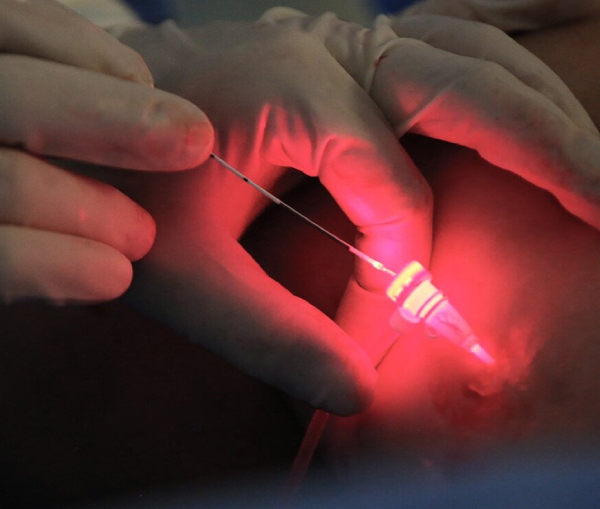Endovenous Thermal Ablation
Endovenous thermal ablation is a way to get rid of varicose veins without surgery. Providers use a laser or radiofrequency waves to seal off veins. This procedure requires a small incision and usually has a shorter recovery time than surgery.
Endovenous thermal ablation is a minimally invasive procedure to treat varicose veins. It’s also called endovenous laser or radiofrequency therapy.
Varicose veins are swollen, twisted blood vessels that bulge just under your skin’s surface. These blue or purple bulges usually appear in your legs, feet and ankles.
During endovenous thermal ablation, your provider seals off varicose veins with a laser or high-frequency radio waves. Closing off varicose veins allows healthy veins to restore normal blood flow.
Your blood vessels have one-way valves that move blood toward your heart. Varicose veins develop when these valves become damaged or weak. When valves aren’t working properly, blood can pool in your veins, causing a bulge or swelling that you can see and feel.

Why it’s done?
You might need endovenous thermal ablation if you have medium to large varicose veins in your legs. Varicose veins often look like bulges in the legs that are bluish or skin-colored.
Symptoms of varicose veins include:
- Local anesthesia to numb the area around your vein.
- Sedative medications to help you relax during your procedure.
- Make a small incision in your leg, usually below your knee or near your ankle.
- Insert a catheter (thin tube) into the incision and guide it into your vein.
- Guide a thin tool into the catheter to your vein. The tool uses a laser or radiofrequency waves to generate heat. This permanently seals off the vein.
Endovenous thermal ablation usually takes one hour. The laser treatment itself takes three to five minutes. It’s usually an outpatient procedure, which means you can go home the same day.
